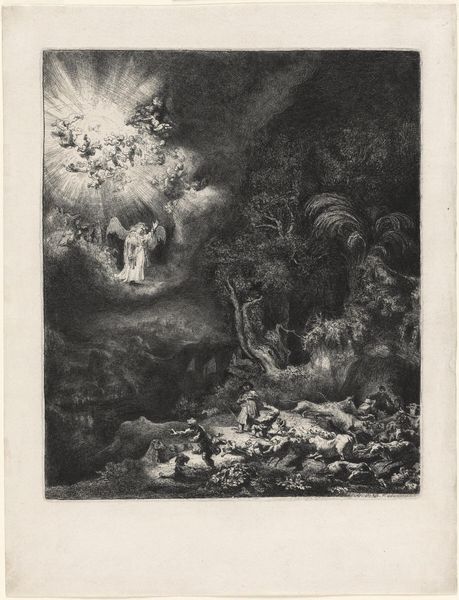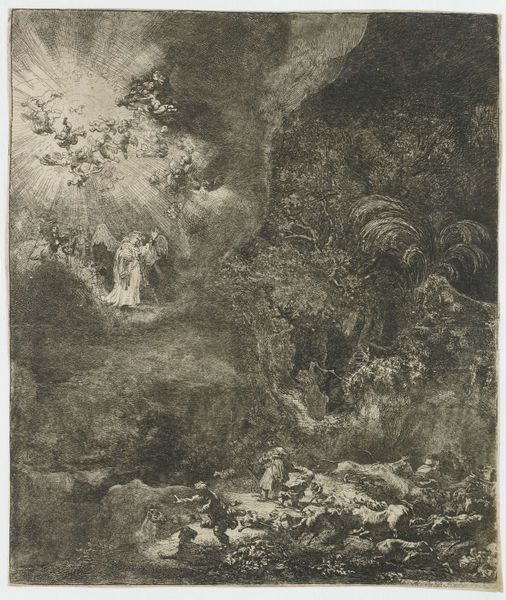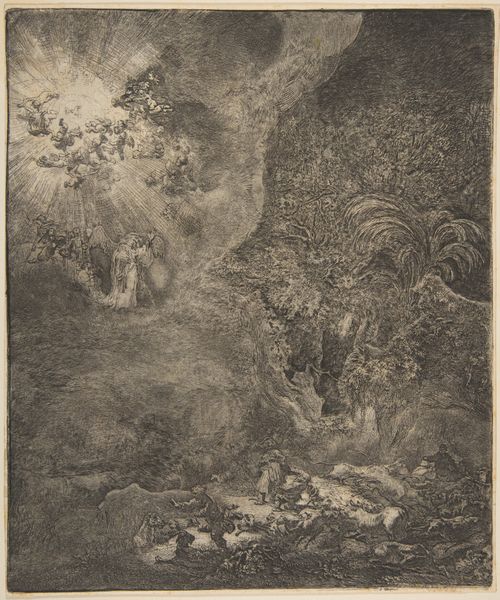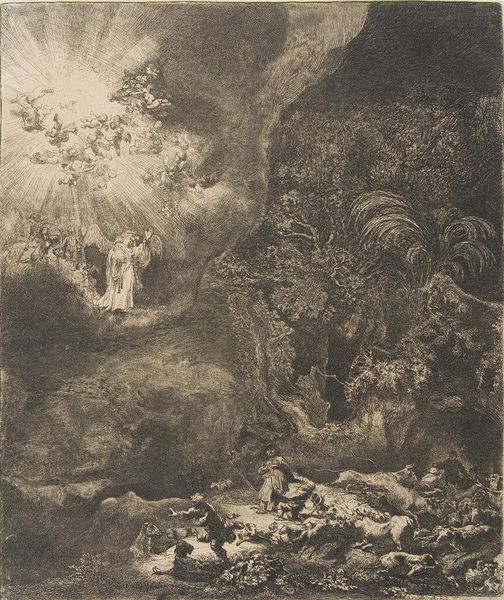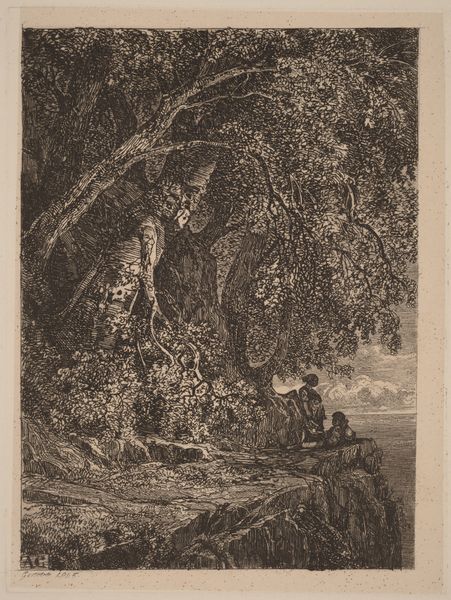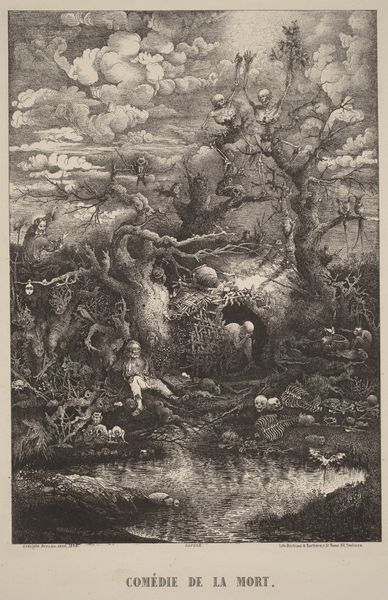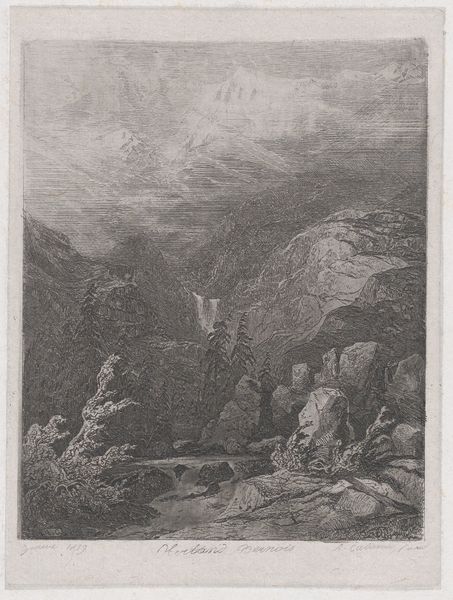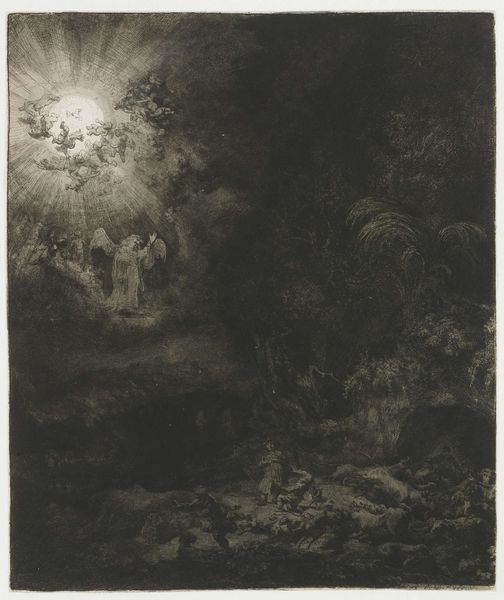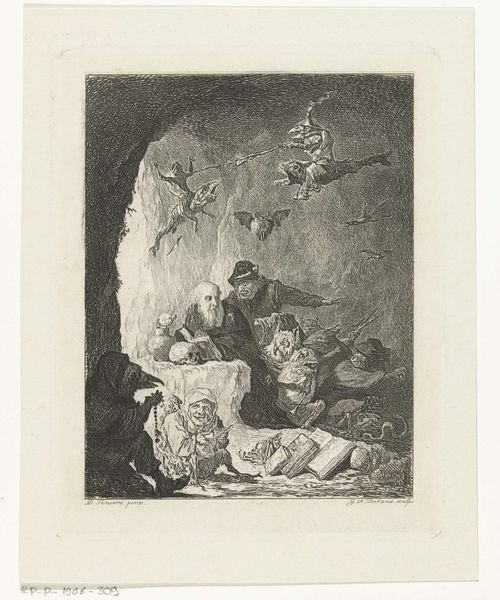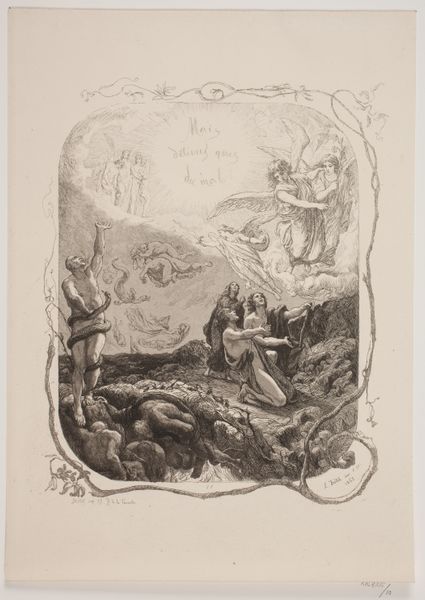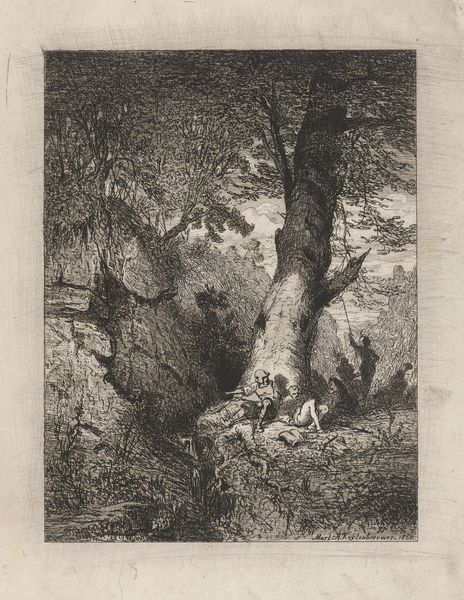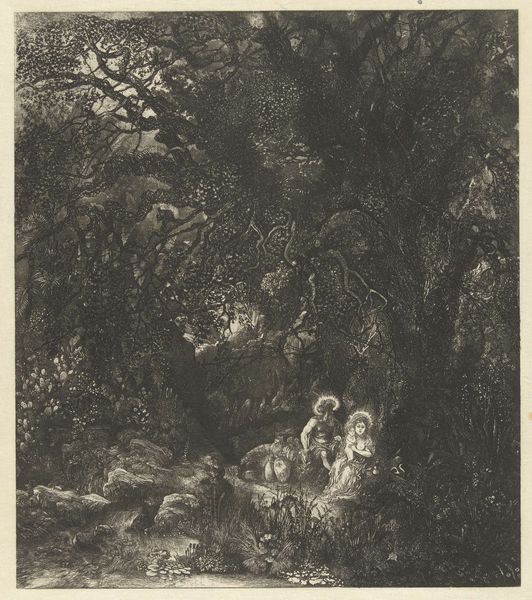
print, etching
#
narrative-art
#
baroque
# print
#
etching
#
landscape
#
charcoal drawing
Dimensions: height 262 mm, width 218 mm
Copyright: Rijks Museum: Open Domain
Editor: Here we have Rembrandt van Rijn's "The Annunciation to the Shepherds," an etching, dating between 1634 and 1808, held in the Rijksmuseum. I’m struck by the contrast between the intensely illuminated angels and the darker, earthier tones below. What catches your eye in terms of how this print was created? Curator: What's immediately interesting is Rembrandt's use of etching to depict divine revelation. The process itself – the acid biting into the metal plate – mirrors, in a way, the forceful intrusion of the divine into the material world of the shepherds. Consider the labor involved: the meticulous application of wax resist, the controlled corrosion of the metal. Does that craftsmanship impact how you see the representation? Editor: That's a great point. The level of detail he achieves through etching is incredible. How would access to quality materials at the time impacted Rembrandt's printing? Curator: Access to materials was crucial. High-quality copper plates would allow for finer lines and more intricate details. Moreover, the quality of the etching mordant - the acid - would impact the depth and darkness of the lines. Remember that materials weren’t just "there"; they were sourced, traded, controlled by specific guilds and economic structures. The very act of creation embedded within social contexts of Rembrandt's time. Do you feel it impacted Rembrandt's depictions of labor itself in this image? Editor: Definitely. The humble existence of the shepherds, set against the spectacle above, it makes me consider themes of class and social hierarchy, with the elite able to use and afford high quality supplies and equipment. Curator: Precisely. The angel's arrival disrupts their labor, a profound interruption from a different social order. The materials and methods Rembrandt employed subtly amplify this narrative. Editor: Seeing the print in this way, really underscores how materials are never neutral; they're tied to labor and socioeconomic conditions. Curator: Exactly. Appreciating art through a material lens offers a whole new depth of insight.
Comments
No comments
Be the first to comment and join the conversation on the ultimate creative platform.
